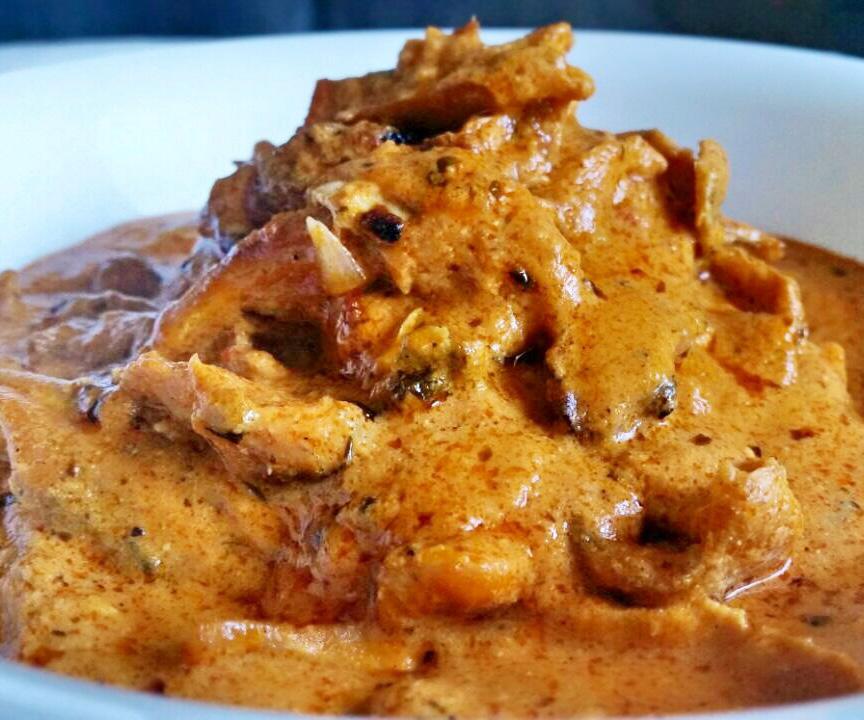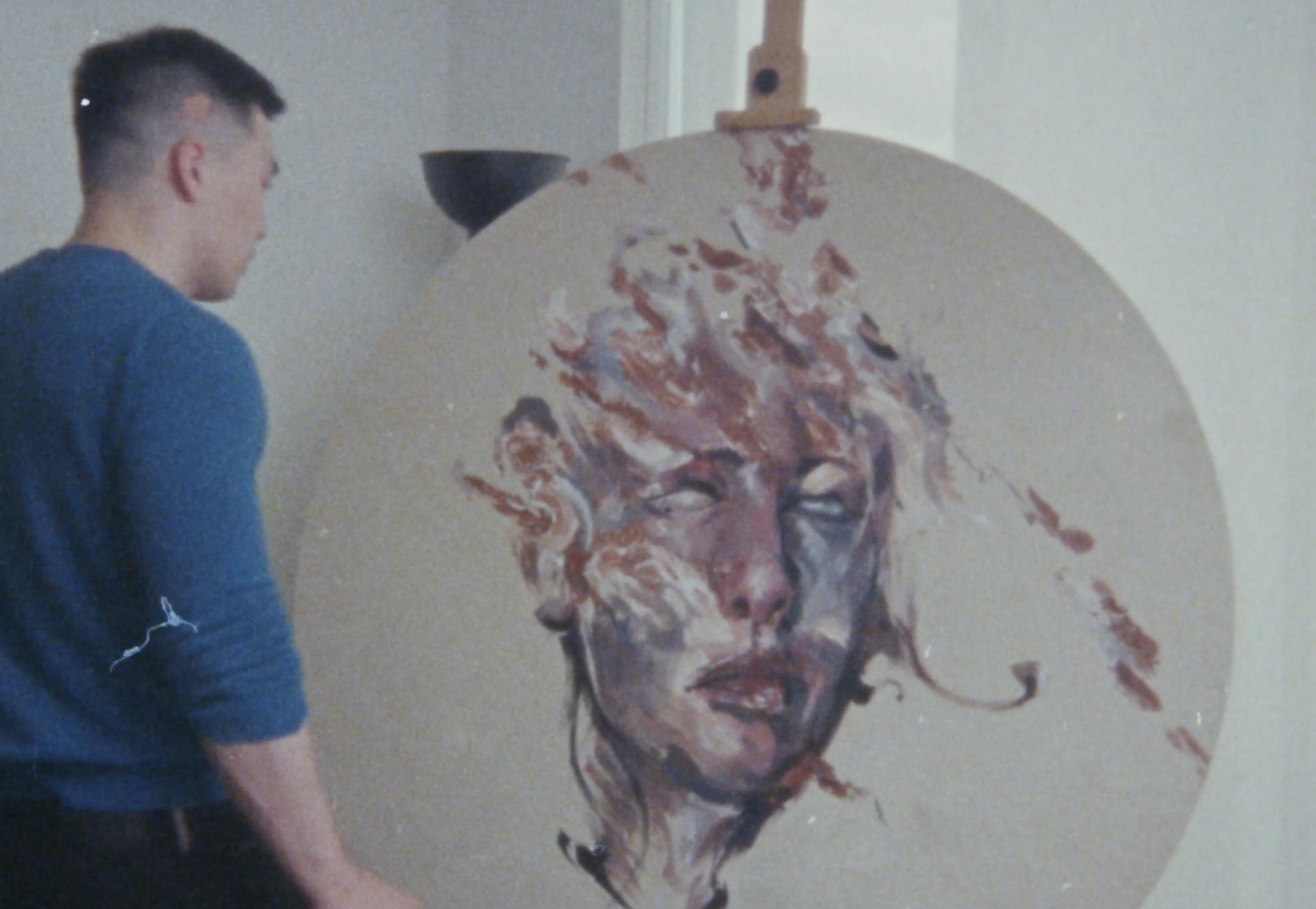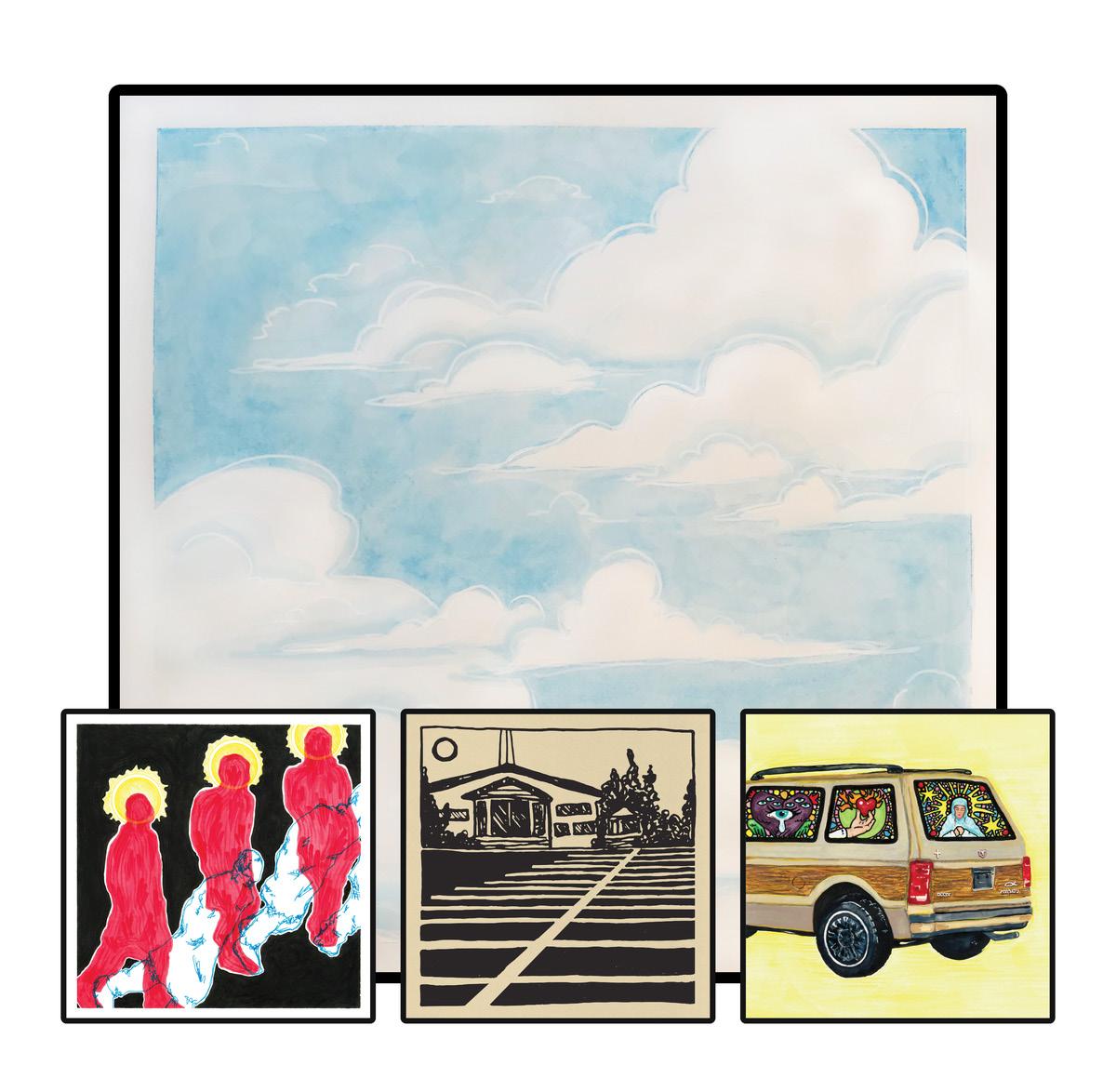
8 minute read
ARTS & CULTURE
Food for Thought: Butter Chicken
The traditional dish started with simple ingredients and a desire to diminish food waste
WRITTEN BY ROSHI CHADHA
PHOTO: A af Ali / Wikimedia Being from Punjab, Northern India, I have many childhood memories of eating my favourite dish, butter chicken curry, with my parents. This luscious curry, paired with scented jeera rice or naan, always lifted my mood. This meal is not only famous in India but in many other parts of the world. The smell of butter and tender chicken pieces mixed in warm tomato-flavoured sauce is mouth watering. Since moving to Canada three years ago, I have tried this dish at many di erent places around Vancouver but none have measured up to the dish made by my mom. I think the secret ingredient for my mom’s recipe is definitely the authentic curry leaves, known as sweet neem, that add more rich flavour to the dish.
Butter chicken was developed by Kundan Lal Jaggia and Kundan Lal Gurjal, who began their culinary journey operating a small road-side eatery in Peshawar, Pakistan. After partition in 1947, both the owners resettled in India where they created murgh makhani (butter chicken) in their restaurant, Moti Mahal. It was a common practice at the time to throw out leftovers right away to avoid the risk of eating spoiled food. However, the owners of this restaurant began using their infamous leftover tandoori chicken pieces to make into a sweet-savoury sauce with lots of butter and cream. This is how butter chicken originated — as a creative and delicious way to combat excess food waste.
It is surprising to see the humble dish, made in a small roadside restaurant, make its way to di erent states in India. Since its beginnings, the butter chicken recipe spread throughout the world with its first introduction in Manhattan. It first appeared there through a print in the newspaper in 1975 highlighting the butter chicken dish served at Gaylord Indian restaurant. Additionally, Indian families who migrated to Canada and other parts of the world began to open their own restaurants and serving this traditional dish.
Butter chicken is a dish that seems complicated to cook but in reality only requires a few main ingredients like butter, chicken, Indian spices such as turmeric and cumin, and staple vegetables like tomatoes and onions. It doesn’t take too long to make and is a hearty and delightful meal after a tiring day. Butter chicken is usually cooked in North India on many special occasions such as Diwali and Holi as it is a traditional comfort food and a staple in our culture.
In current western society, this butter chicken curry is also used separately as fillings for wraps, burgers, pizzas, and pot pies. Although it makes me feel a little bit anguished knowing the dish is getting further from the traditional recipe, it’s interesting to see the popularity and di erent interpretations of butter chicken in the western world. If you are curious to try this dish, some of my favourite restaurants to order butter chicken from are Sula Indian restaurant and Tasty Indian Bistro.
INTERTWINING IDENTITIES Hybridity highlights the collectivity of Asian Canadian diasporic experience
The short documentary film combats the loneliness of having one foot in two worlds by reminding us we have each other
YELIN GEMMA LEE // ARTS & CULTURE EDITOR
Hybridity begins with an introduction by multiple voices from featured artists overlapping each other — the hybridity of united voices. It's almost as though they nish each other’s sentences but their voices overlap enough to be noticeably disruptive. I felt immediately pulled into the creative direction of the lm by this compelling introduction. It encompassed the solidarity between these local artists and the Asian Canadian community through lmography.
What began as a passion project between like-minded SFU lm students sparked into a beautiful short documentary that captivates you under its spell. Being under four minutes, Hybridity leaves you wanting more. The lm showcases masterful creative direction and cinematography.
The Peak interviewed Kevin Kim, director of Hybridity, to learn more about his thoughts behind the project. He noted the ideas around it began to take form in early April, where they were in re ective anticipation of Asian Heritage Month. Hybridity celebrates local Asian Canadian artists in their various disciplines. PHOTO: Kevin Kim / Hybridity

more people like me, immigrants who can’t place themselves in either world. We either don’t think about it or feel at a loss when we do.”
Kim explained the project originated as an idea to reach out to people around him to ask for their diasporic perspectives, but then it settled to taking the opportunity to celebrate local AAPI artists who were also rst or second generation immigrants.
“I wanted to showcase impactful, local artists in their spaces to show other multicultural artists that there is a vibrant community of Asian Canadian artists here in Vancouver,” said Kim. “There are a lot of expectations set in the industry on who we are and what we create. It’s important that together we are breaking said norms collectively, creating a supportive and safe environment where we can express ourselves freely without judgement and maintaining the pride of being both the Eastern and Western worlds.” artists, my favorite line was when Jace Junggyu Kim said, “I was good at drawing and I didn’t have to really speak. My art was sort of a language to communicate with other people.”
The way the dialogue between ve di erent artists was so seamlessly integrated together was very impactful. The ow of their lines drifted from person to the next as though they were speaking as one voice, nurturing a collective narrative that bloomed and spilled over. The lm switched between clear footage and footage that looked like it was old- lm, which seemed to represent the shifting nature of diaspora over time. The footage of the artists working their respective disciplines in their spaces was peaceful and inspiring to watch.
“It’s important that we give space for Asian Canadians to share their work so that we can share our stories without fearing judgement or prejudice, and not let our stories be twisted by the perspective of others,” said Kim. “Our goal with the lm is for the audience to understand that they are not alone [ . . . ] they can feel supported and proud of who they are as multicultural artists. We also hope to show those who aren’t in the said demographic what it is like to be a culturally hybrid artist and to raise the voices of our community to the public.”

The band bonded over their lived experiences of growing up in conservative religious households. PHOTO: Megan Lambert
The Sylvia Platters unpacks complicated cultural upbringings in Youth Without Virtue
The pandemic was a meditative catalyst for the healing EP
YELIN GEMMA LEE // ARTS & CULTURE EDITOR
If you were looking for a short and sweet EP to listen to during co ee breaks on your sunlit patio this summer, I’ve got just the remedy for you. The Sylvia Platters (TSP), an indie-rock band from BC’s Fraser Valley, released their melancholic EP titled Youth Without Virtue on June 24. The album was created throughout the pandemic and the quiet moments of re ection it allowed.
The Peak interviewed TSP bassist, Stephen Carl O’Shea, to learn more about the band and their creative direction. He explained the album explores the clash between conservative cultural upbringings and one’s own adopted values as an adult.
“There exists the world your parents raised you in, and then there is the world you interpret to be authentic and real. Social conditioning within tightly controlled conservative communities employs fear-based tactics to ensure the community’s boundaries are established and held,” said O’Shea. “For each of us, we chose to unpack these complicated histories of upbringings and channel them through energetic expressions of upbeats, downbeats, and vocal harmonies.”
O’Shea said the band bonded over their shared lived experiences of this dissonance between the values they were raised on and the values they ultimately chose for themselves. As someone who navigates the treacherous e ects of religious trauma, Youth Without Virtue played a special role during my loneliest moments. The lyrics and upbeat instrumentals felt like a breath of fresh air and sunlight pouring through a dark room at the same time. Rather than being a sorrowful re ection, it’s a resounding soundtrack for hope and healing.
I love listening to the EP on loop because it seamlessly ows into the next track and the EP’s poetic imagery is on theme but not repetitive. Some of my favourite lyrics are found in “Doldrums:” “Dredging up some old sins / So bored of this insurrection / With no unearned a ection.” But my ultimate favourite song has to be the title track, which has an upbeat industrial production that clears away for the lyrics of the verses to shine through. The lyrics resonated with me deeply, especially when they croon, “When the guilt starts getting the best of you / And your faithless friends are falling through / Listen to your sister / Take her word for scripture,” and the bridge: “You’re never enough / You’re never alright / You kill what you love / It burns you alive.”
Youth Without Virtue was released physically as a cassette. When asked why, O’Shea explained it felt like the best option in terms of time, cost, and sustainability.
“In this world of intangible releases, another digital EP felt incredibly underwhelming. We desperately wanted to embrace something tactile that TSP fans could hold in their hands,” said O’Shea. “We landed on cassettes as the perfect format as it connected to our upbringing of long family road trips in Chrysler Voyager minivans and their stock cassette decks. For good measure, we got exactly 66 cassettes made up to suit the thematic elements of Youth Without Virtue.” IMAGE: The Sylvia Platters

O’Shea revealed that Youth Without Virtue is a part of a Youth Without… series of EP releases, with plans for the second one being drafted up.
“All of us in TSP are very passionate about our artistic endeavours as an expression of our lived experiences. The band remains an outlet for creative expression and cathartic release,” said O’Shea.



